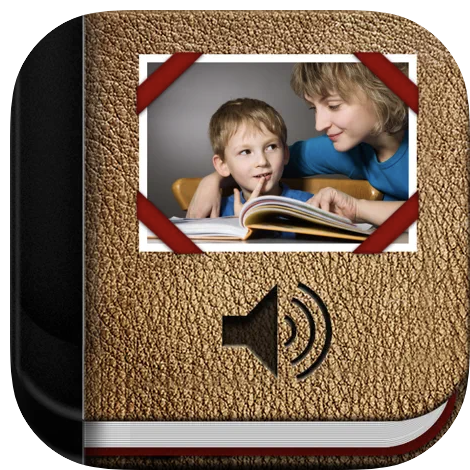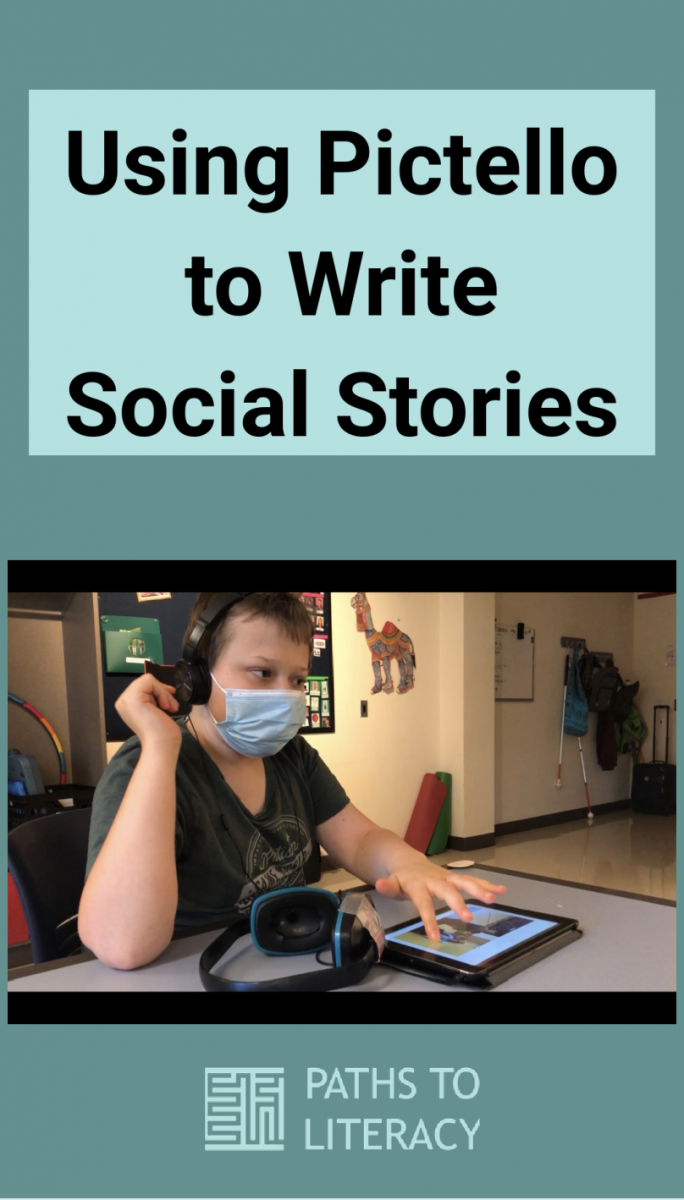Using Pictello to Write Social Stories
 Pictello is an iOS app made by AssistiveWare that can be used to create experience stories and social stories using pictures, text, audio recordings, and video. Pictello can be used to build literacy skills, social skills, communication, social-emotional learning, and early access to VoiceOver by teaching students the “tap” and “swipe and tap” gestures to access their stories. Some students might access daily/weekly schedules using Pictello.
Pictello is an iOS app made by AssistiveWare that can be used to create experience stories and social stories using pictures, text, audio recordings, and video. Pictello can be used to build literacy skills, social skills, communication, social-emotional learning, and early access to VoiceOver by teaching students the “tap” and “swipe and tap” gestures to access their stories. Some students might access daily/weekly schedules using Pictello.
Pictello currently costs $18.99 in the App Store. You cannot change the size of the text, however, the App automatically will read text, or you can make your own recording of the text so the story is read in a familiar voice. Pictures and videos can be added.
Examples:
- Team Eddie Moves
- We All Wear Masks
- Chore Share
- Making choices about experience stories (Lockdown drill)
- Social-Emotional Learning (feelings/calming my body)
- Using "tap" gesture to independently turn the pages
Connecting with Others
One of my students is sometimes reluctant to get outside and exercise, and our team thought he might be motivated by knowing what some familiar people do for exercise. We used Pictello to create a short video with each of us telling what we like to when we feel like moving, and we included two clips of this student outside too.
Team Eddie Moves
We All Wear Masks
We made this story using Pictello to help to prepare students to come back to school and wear masks. Each staff member greets each student and talks about different situations during which they wear masks. The audio component is helpful for students who are blind or who have low vision.
Developing Literacy Skills: Experience Stories
Experience stories are an early step in developing literacy skills through audio recordings, tactile books, print and braille. By choosing a topic that is meaningful to the child, such as a familiar routine or a special event, they can participate in the creation of the narrative and then share it with others in the medium of their choice. One of my students created a Pictello story to tell about the chores that he does at home.
Chore Share
What is a Social Story?
Students with limited verbal communication might benefit from instruction in accessing and learning social scripts through social stories. A social script is a short narrative that is written and shared in a first-person narrative. Social scripts and social stories are an evidence-based strategy for teaching students. This script might be used to address a problem or a topic of discussion. Social scripts can provide structure and a routine to a situation that might be new or stressful for a student. This tool is often used for students who are on the autism spectrum.
Carol Gray is best known for the development of Social Stories, which she defines on her website: “A Social Story accurately describes a context, skill, achievement, or concept according to 10 defining criteria. These criteria guide Story research, development, and implementation to ensure an overall patient and supportive quality, and a format, 'voice', content, and learning experience that is descriptive, meaningful, and physically, socially, and emotionally safe for the child, adolescent, or adult with autism.” You can read about her research and the history of Social Stories on her website.
The goal of Social Stories is to share accurate, relatable information using a content, format, and voice that is descriptive and meaningful for the intended audience. There should be at least twice as many descriptive sentences (e.g., "Most days, when I come to school in the morning, Julie and Jordan are there.") as coaching sentences ("I can take deep breaths, hum, or chew gum to calm my body.") You should use vocabulary and positive language that the student uses. The story should provide information answering “wh-“ questions on a topic.
Stories for Students to Explore Feelings and Emotions
Pictello can also be a helpful tool to develop students' social-emotional awareness. My students benefit from explicit teaching and stories about emotions that include familiar staff members sharing how they feel when experiencing certain emotions, e.g., "When I feel happy, I might smile and laugh. I feel happy when I hear a song that I like." One of my students is very fearful of Lockdown Drills, both because they are very loud, and because they interrupt the routine or scheduled activity. We have found that creating a story on Pictello has helped him to tolerate Lockdown Drills and this story has even become one that he chooses to listen to.
Lockdown Drill Story
In this virtual lesson, we used Pictello for the student to make choices about which experience story he wanted to listen to. This worked on choice-making skills, communication, and self-determination skills, as well as practicing his swipe and tap gestures on the iPad.
How Do You Calm Your Body
Building Technical Skills: Independently Using the "Tap" Gesture to Turn the Pages
When students first start accessing a Pictello story independently, it can be helpful to set it to "auto-play," so they can use a simple "tap" gesture to turn the page, as shown in the video below. (Please note that we have not included a transcript of this video, as it is being used here just to demonstrate independence in using the "tap" gesture to turn the page.

